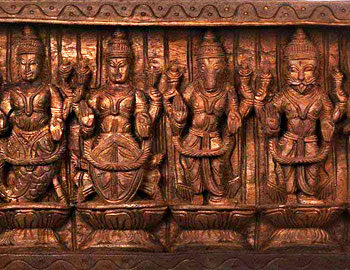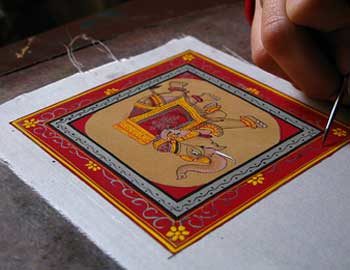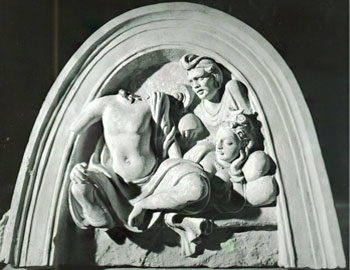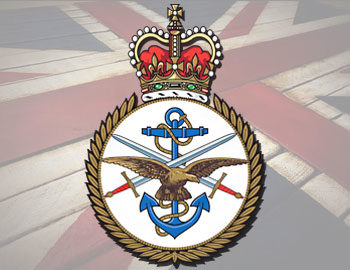

यदा यदा हि धर्मस्य ग्लानिर्भवति भारत ।
धर्मसंस्थापनार्थाय सम्भवामि युगे युगे॥
“It is I who descends to earth from time to time to reinstitute the order when the anarchy prevails” – the concept of Divine descend is a phenomenon that speaks about the manifestation of divinity into a form. In Bhagawad Gitā [1] Shri Kiṣṇa declares that God himself incarnates to eradicate the evil, to put an end to the impious practices and to eliminate the chaos that prevailed in an otherwise peaceful society. These incarnations or the Avatāras is a core concept of Hinduism and being the preserver and sustainer Aspect of God within the Hindu Trinity; they are often associated with Viṣṇu. When pertaining to Avatāras in the Hindu tradition, the most widely associated deity is clearly Viṣṇu. According to the Bhāgavata Purāṇa, Viṣṇu has innumerable Avatāras in unlimited universes, though there are ten major incarnations, known collectively as Daśāvatāra. The concept of Daśāvatāra – ten incarnations of Lord Viṣṇu – is not treated as mere mythological or religious stories in India, but is incorporated in the roots of Indian society in the form of philosophy as well as performing arts and creative arts. The most unusual combination of Daśāvatāra mythology, Indian art forms and the practicality of Indian society is “the Depiction of Daśāvatāra on Indian Coins”.
Continue reading Depiction of Daśāvatāra on Indian Coins
The Mintage World Team comprises of experts, researchers and writers from the field of Philately, Notaphily and Numismatics who try to shed light on some of the most interesting aspects of coins, banknotes and stamps from not just India but across the globe as well.

India has been a riot of colours with each region developing a culturally unique style of paintings! Miniature Paintings undoubtedly are the best of all. Starting from merely being the illustrations for religious texts, Miniature Paintings have stolen many hearts with its varied topics of depiction. Originally the sacred texts were written on long narrow strips of palm leaves bound together in form of a bundle. Due to the size of the palm leaf that was usually one foot long and less than 3 inches wide, the area available for painting the illustrations was limited. The illustrations, therefore, are miniature in size and hence came to be known as “Miniature Painting”. These manuscripts were meant to be held in one’s hands and viewed from a close distance.
Continue reading Indian Miniature Paintings on Stamps
The Mintage World Team comprises of experts, researchers and writers from the field of Philately, Notaphily and Numismatics who try to shed light on some of the most interesting aspects of coins, banknotes and stamps from not just India but across the globe as well.

Afghanistan, which stands at a crossroad of the ancient civilizations in the East and West, has kept a unique treasure in different parts of its land. In this blog, we will explore the Cultural Heritage of Afghanistan which has been destroyed or is at a risk of ruin from armed conflict.
Hundreds of Archaeological sites, monuments and unique cultural and historical objects relating to different periods, such as Greco Bactrian, Kushan, Sassanid-Ephtalits, Hindu Shahis, and Islamic, were unearthed in this country. A large portion of these objects was kept in the Kabul National Museum and numbers of them were preserved in the depot of the Archaeological Institute.
Continue reading Cultural Heritage of Afghanistan on stamps
The Mintage World Team comprises of experts, researchers and writers from the field of Philately, Notaphily and Numismatics who try to shed light on some of the most interesting aspects of coins, banknotes and stamps from not just India but across the globe as well.

Welcome to our series of “Banknotes of the world”. Though banknotes by their very definition are a type of negotiable promissory note, made by a bank, payable to the bearer on demand, they are artistic treasures in their own right. All the countries are no doubt proud of their history and heritage and proudly boast about them on their currency notes. Currency notes and their designs and the reason behind their issuance are in itself a topic of great interest and study.
Continue reading Banknotes of the World-I
The Mintage World Team comprises of experts, researchers and writers from the field of Philately, Notaphily and Numismatics who try to shed light on some of the most interesting aspects of coins, banknotes and stamps from not just India but across the globe as well.